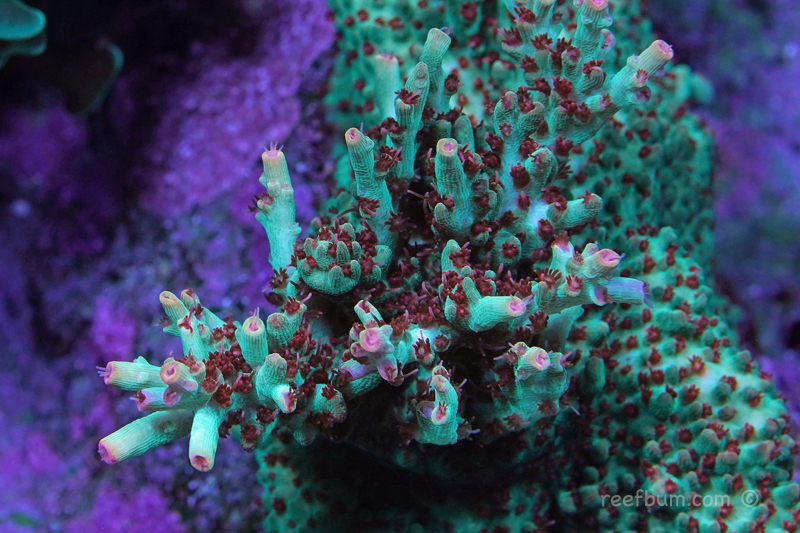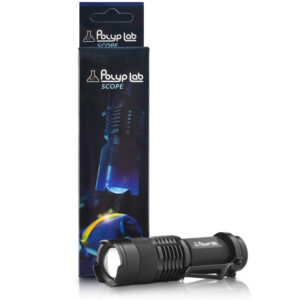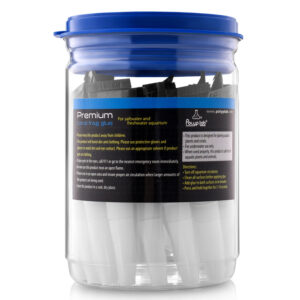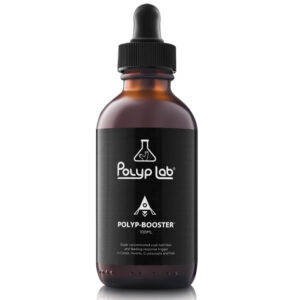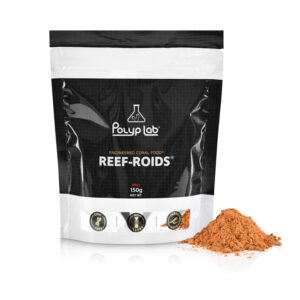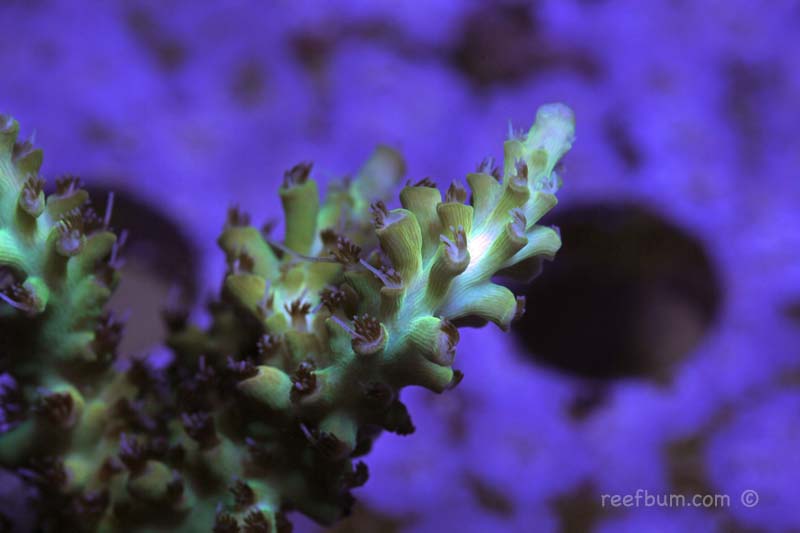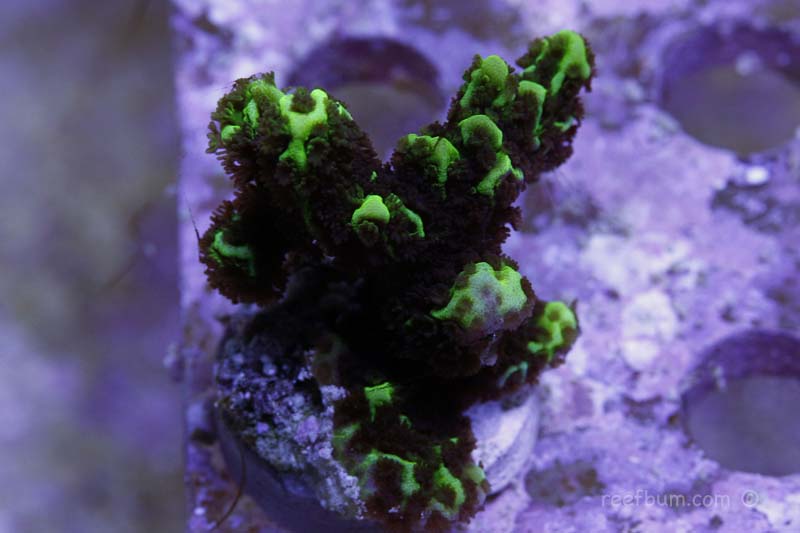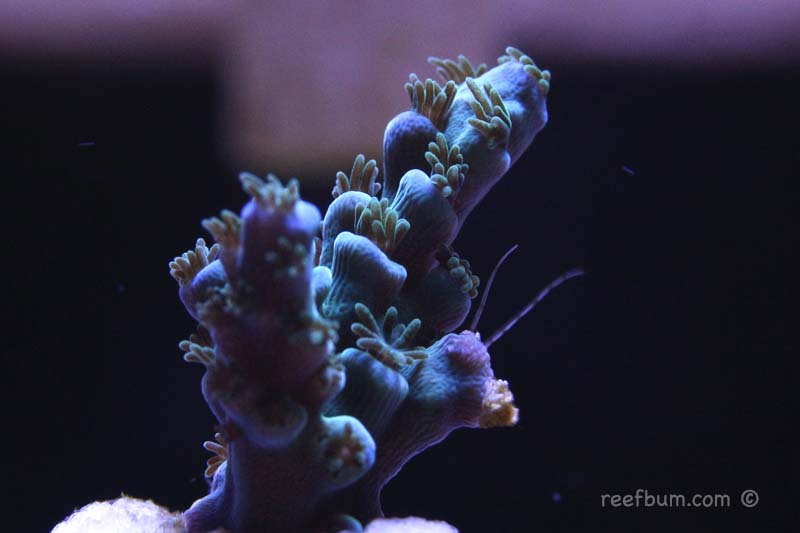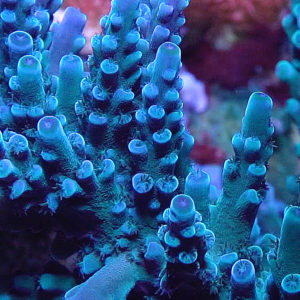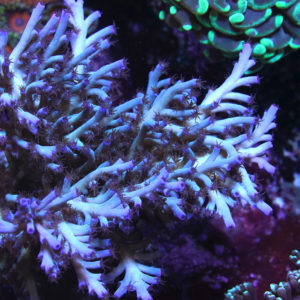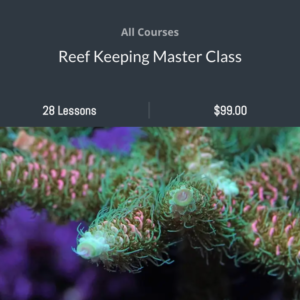One key to keeping an eye catching SPS dominated reef is to plan ahead and think about what the reef might look like in a year or two when it matures. Do yourhomework and gather all the knowledge you can about the corals you are interested in adding. Every reef keeper starts with a blank canvas and has the opportunity to create their own masterpiece but certain best practices and tips on choosing and placing SPS can be followed to achieve success.
Have a Vision For the Future
Understanding and anticipating growth rates and patterns is critical and I can’t tell you how many times I failed to take these factors into consideration. For instance, I love the color and pattern of the Acropora Yongei (“Green Bali Slimer”) but it grows fast, really fast, and can quickly overtake a significant amount of real estate.
In my old 225 gallon tank I put a 3” mini colony of the Slimer in the bottom left hand corner of my tank and it grew right to the top of my 24” tall tank. In fact, the tips seemed to be extending outside the top of the tank!
The same is true with Birdsnest corals. They can grow like weeds and encroach on other corals, inhibiting their growth. I had a couple of Birdsnest colonies that I had to frag constantly due to the quick growth. Given the accelerated growth, these colonies started to die off at the base since that part of the coral was not receiving sufficient light and flow. One option in this instance is to replace the entire colony with a large and healthy frag from the top of the colony.
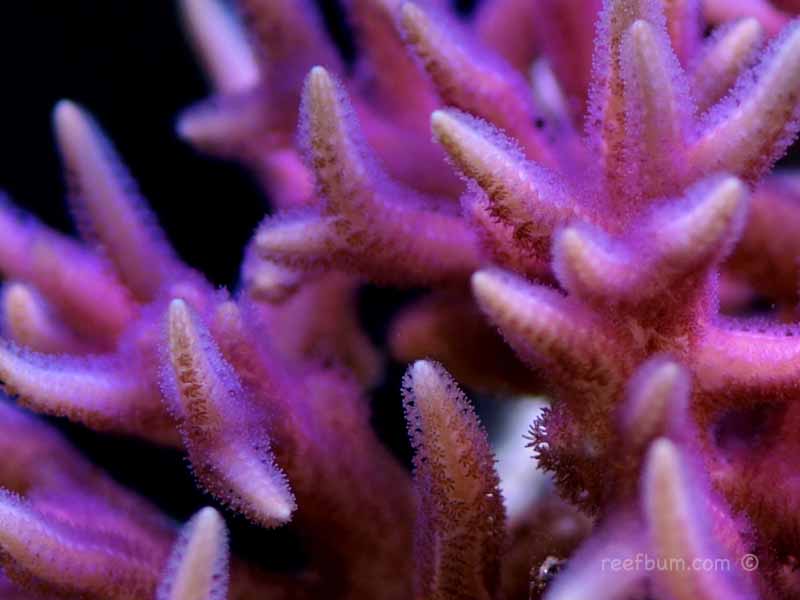
A coral can also start to show signs of rapid tissue necrosis or RTN on the main part of the coral if it grows too large. Again, lack of flow and light can trigger this type of event. This happened to my giant ORA Hawkins colony, but fortunately I was able to frag large chunks in time to save it.
Capricornus or “Caps” are beautiful, scrolling corals but they are also aggressive and can easily cover other corals that lie beneath. Place these corals lower down and give them a wide berth if you want them in your tank.

Frags or Colonies?
Another consideration in planning the layout of a SPS tank is whether to start with frags or larger pieces. Some folks like the instant gratification gained by adding bigger pieces while others prefer starting with small frags and seeing them grow into colonies. My preference is to be patient and start with frags since they can evolve and grow more organically with the reef, providing a more natural look.
I had a Cali Tort that grew from a 1” frag into a 16” monster colony. And a ¾” Sexy Corals Orange Passion frag that blossomed into a 10” colony. As well as a Tubbs Stellata Monti that grew from a 1” frag into a beautiful 12” colony. It did take up to two years for these frags to develop into colonies but, in my opinion, it was well worth the wait.
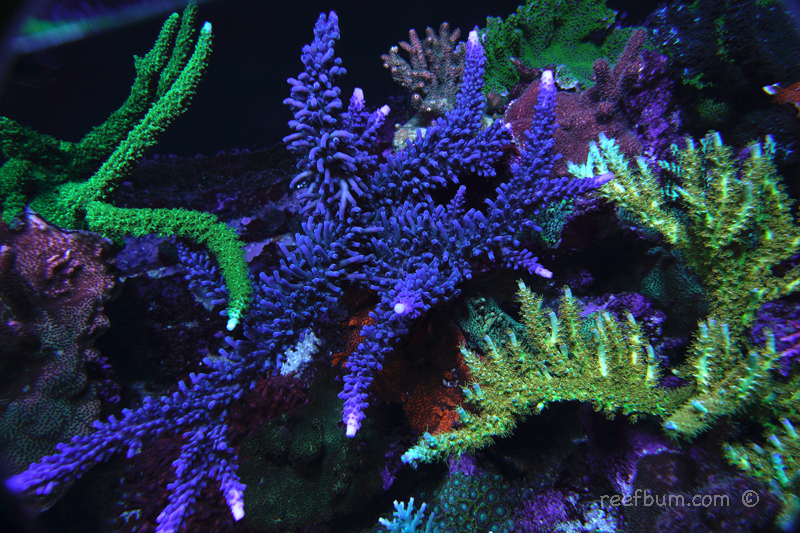
No matter which way you go, give new corals room whether they are fast growers or not. It might seem ok to place a couple of slow growing corals next to one another but the tight placement will limit flow and impact their health. You also want to avoid stressing out a newly placed coral by pruning or moving it.
Consider Lighting & Circulation Demands + Coral Hardiness
It is also important to bone up on the lighting and circulation demands of the corals you are considering. For instance, an Oregon Blue Tort needs a lot of light and good flow and is happiest near the top of the tank. On the other hand, some corals such as the Tyree Icefire Echinata or ORA Hawkins do well in the middle or lower half of a tank where there is less flow and light.
The hardiness of a coral is another factor one should consider. More demanding corals such as an AquaSD Rainbow Millie should only be added after less demanding corals such as Montiporas establish themselves in a new tank.
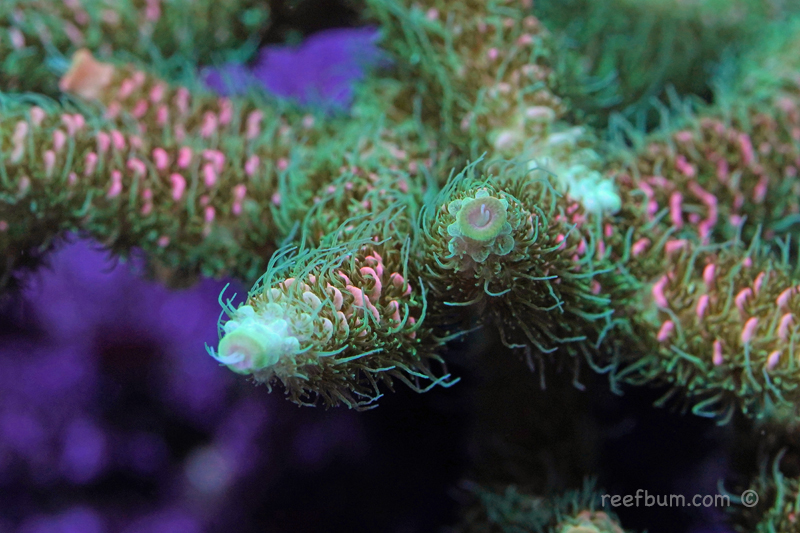
Finally, be careful with the fish you add and make sure they don’t have a reputation as coral nippers. Certain Angelfish are ok to have in a SPS dominated reef while others are definite no nos. It can be a major undertaking to remove a fish from a mature reef so do your homework on their habits and tendencies. A reef is a growing and evolving ecosystem with many interdependent pieces so make sure you take this into consideration when building your masterpiece.
Additional Resources
If you would like some help with a new tank build, including help designing a custom aquarium, or help re-configuring your current setup then you can visit this page for more information. And if you are looking to add some equipment, I do sell GHL, Pax Bellum, Reef Octopus Calcium and Kalk Reactors and Royal Exclusiv products, including Dreamboxes, which is the equipment I use and recommend. I also sell Reef Brite metal halide and LED fixtures as well as Maxspect & IceCap Gyres.
As for additional insights and information, please explore my many other reef tank and SPS related articles as well as my YouTube channel. For an even deeper dive into reef tank care you can check out my Reef Keeping Master Class. This online course is an immersive and one of a kind educational tool designed to help reef aquarium hobbyists build and maintain a beautiful SPS reef tank. The course is a series of video presentations with some supplemental video from my YouTube channel. There are also quizzes to help students retain and understand the information presented in the course.
Need some frags…..I can help with that as well 🙂 Please visit my SPS Frag store to see what is available.

